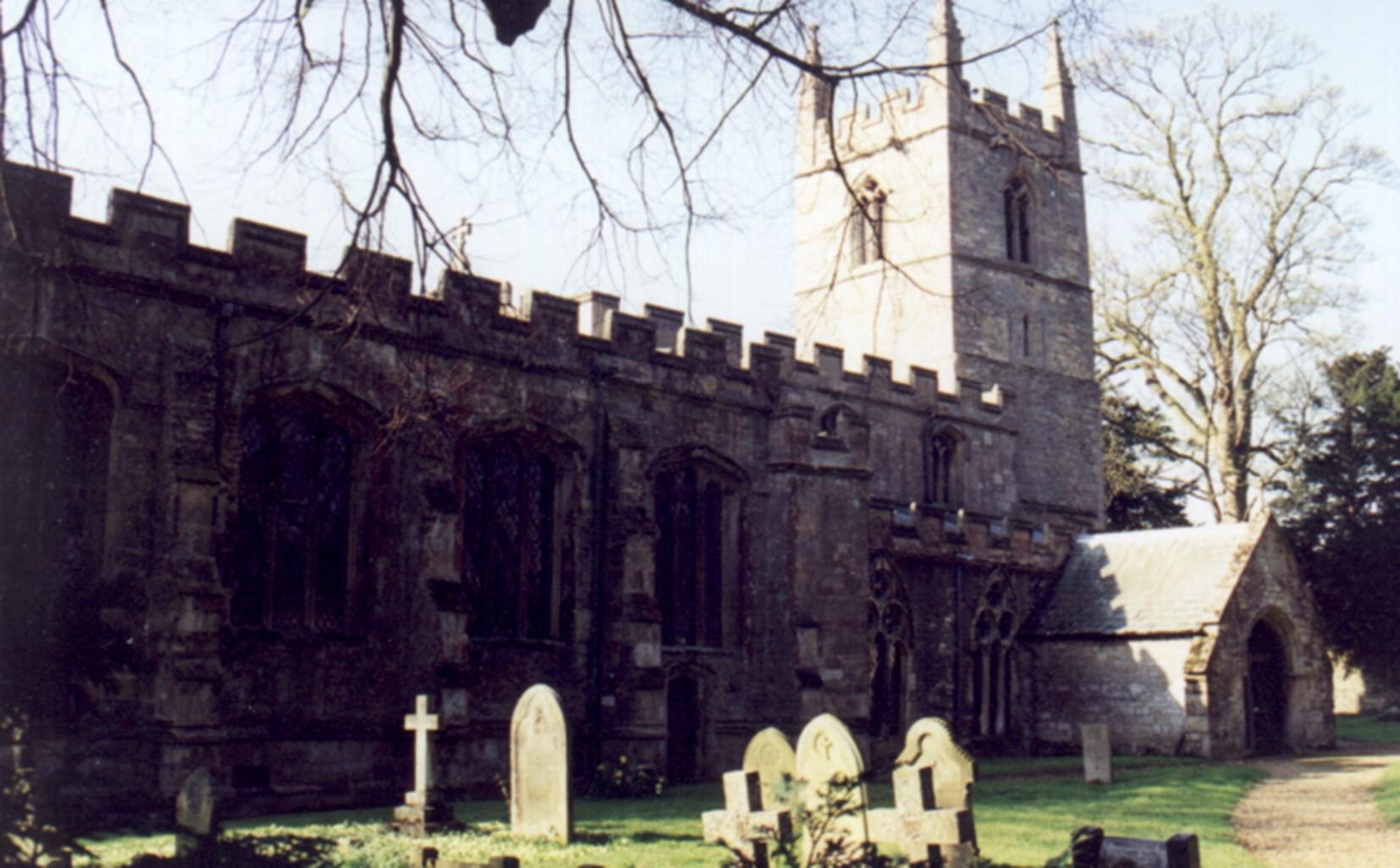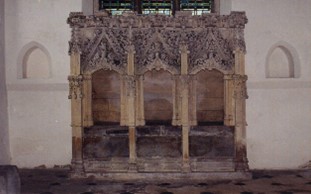
St. Andrew’s Church at Irnham (Grade one listed) is among the most noteworthy of Lincolnshire’s many medieval churches, being ‘home’ to the famous Luttrell Psalter of circa 1325 - 1340, commissioned by Sir Geoffrey Luttrell of Irnham (d. 1345). It is large (for the size of the community), light and bright and contains many fine monuments from the early medieval to the late Georgian periods, along with brasses, Royal Arms of King George I and a mid-Victorian Hatchment. Nikolaus Pevsner describes what was then thought to be a stone Easter Sepulchre to the Luttrell family as the great surprise … most ornate and inventive.
The surviving ‘sepulchre’ section of Sir Geoffrey Luttrell’s Tomb Monument (?)

Sir Geoffrey likely further commissioned the magnificent three-bay stone structure above - probably the surviving section of his once larger tomb edifice. His Arms, including the martets (martins or swallows) feature in the stonework along with the Arms of his wife.
In his Will, Geoffrey Luttrell asked to be buried near the high [main] altar – a most prestigious position. To have one’s tomb used additionally as the sepulchre - the tomb of Christ - during the rituals of the final days of Holy Week (the ‘Sacred Triduum’) was the highest honour. For a few days your own tomb served symbolically as the tomb of Christ.
However, it has been argued recently that the monument cannot be a sepulchre as the niches are too small to contain a cross and the host and it is, rather, a ‘sacrament house’ used to reserve the blessed sacrament throughout the year. A dual function remains, though, a possibility.
The monument is recorded in 1833 as being in the arcade (on the north side of the chancel) and this might have been its original position – though Georgian burials could have displaced Sir Geoffrey (and it is unclear what may have occurred earlier at the Reformation). In 1858 the monument was moved to its present position.
There is a particularly fine floor brass by the north arcade to Sir Andrew Luttrell, Sir Geoffrey's son; d. 1390.
Certainly, Easter Sepulchres were often combined with a notable tomb and, although an earlier date of 1303 has been suggested for our carving, it could well have been part of the tomb edifice of Sir Geoffrey Luttrell 3 who died in 1345. His arms, including the marlets (that is martins or swallows), feature in the carvings on the Sepulchre along with the Sutton arms of his wife. It should also be noted that there is a prominent tomb niche on the south side of the Chancel, but it seems too early to have been Sir Geoffrey’s – Pevsner dates it to the late 1200s. Whilst the possibility of the carving being an Easter Sepulchre cannot be fully ruled out until further research is undertaken, none of the known surviving Easter Sepulchres are crafted in the same way as this carving, hence suggesting that it was always part of a tomb, without a secondary sepulchre function.
Between 2000-2004 the PCC undertook a major programme of works that saw the building re-roofed, re-wired and relit, heating installed, the windows conserved and restored, the organ renovated, a kitchen area created, a water supply introduced and external drainage improved,. The Tower was augmented with a new Bell and an outer door, by Ptolemy Dean (now Surveyor of the Fabric at Westminster Abbey), was installed.
Services normally take place at St. Andrew’s every Sunday at 11am., except on a fifth Sunday in the month. Holy Communion is celebrated on the second Sunday of the month, with Morning Prayer on other Sundays.
The Rector of St Andrew's Church is The Revd Stephen Buckman revstephen@btinternet.com
A brief guide as you walk around the church can be downloaded here.
